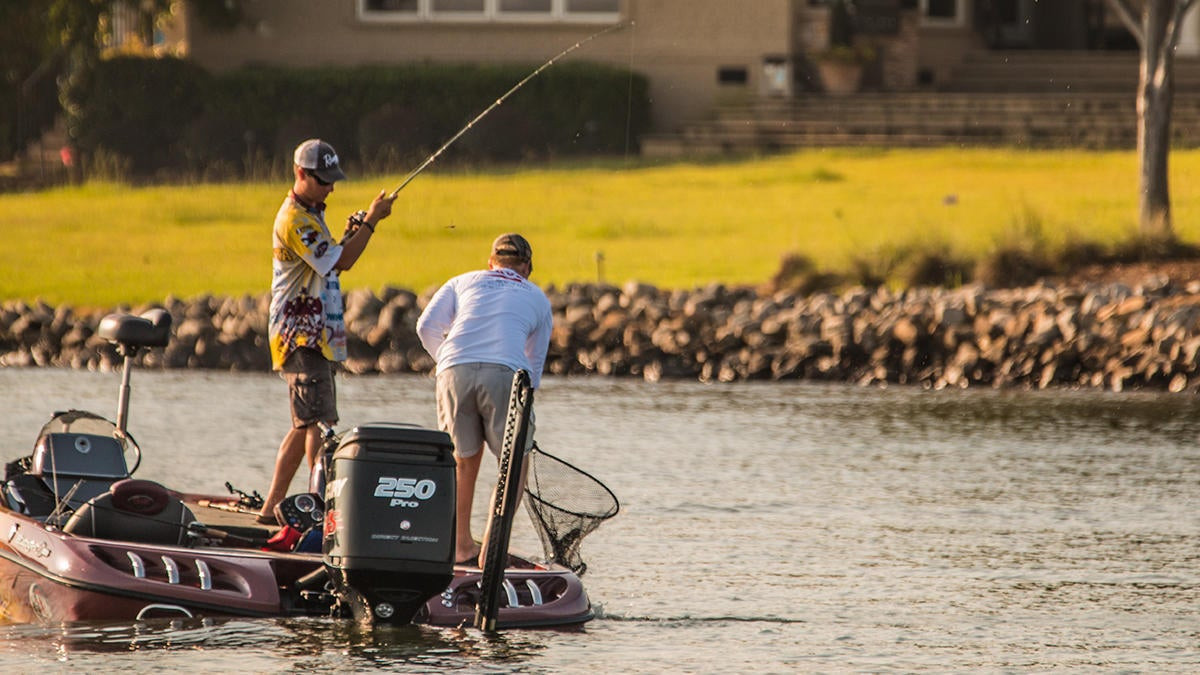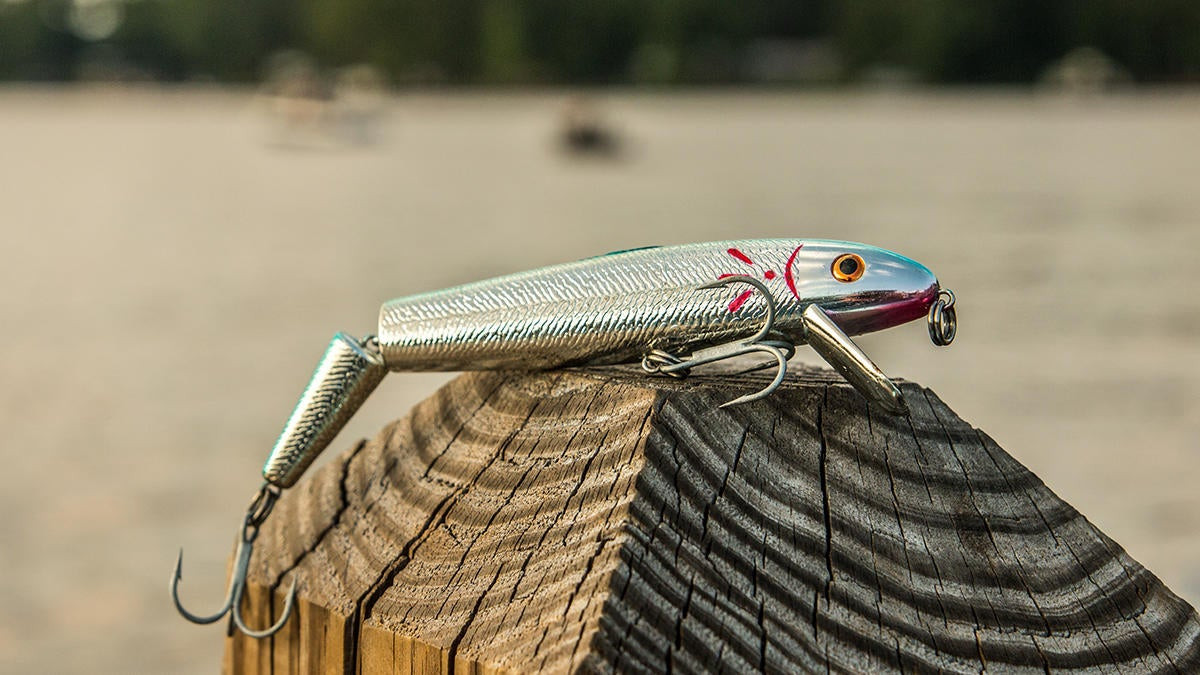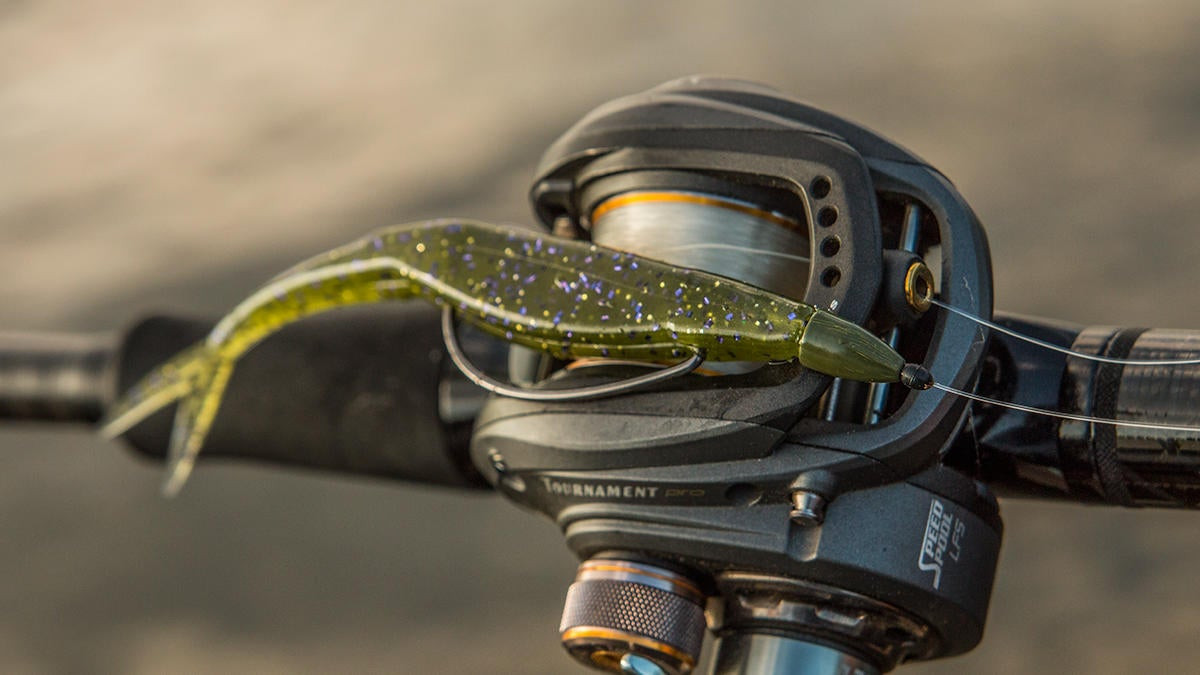In my neck of the woods, bass fishing gets really tough this time of year. The bass spawn, shad spawn and most of the big mayfly hatches are done and are quickly replaced with 90-degree water temperatures and incredibly lethargic bass. It almost seems like a light switch some years; it can be crazy action one day and once the switch is flipped, it’s all over and the proverbial dog days are upon us.
That’s definitely what happened this year. We enjoyed a pretty good spring bite but a few weeks ago, everything just seemed to shut down. So it’s hard enough catching bass in these conditions; I think I’ve made my point on that.
But do you know what’s even tougher?
Catching these sluggish summer bass behind somebody.
Being a co-angler is tough, man. I did it for a few years in the tournament scene when I was younger before I could afford my own boat. And lately due to a few boat problems, I’ve been forced to the back deck of some friends’ boats a few times. It has given me an entirely renewed respect for those who crush it as a co-angler. It takes a special mindset, that’s for darn sure.
As I was rigging some tackle in my shop the other evening, I started talking to my wife about my old co-angler days. I was lucky enough to win the state points title from the back of the boat and I did it by being creative with my bait selection and presentation.
I’ll run through the setups that’ll help you increase your success from the back deck.
Ditch the braid and grab a popper on monofilament
I know, I know… braided whale rope and hollow body frogs are all the rage for shallow power anglers these days. Back when I fished primarily as a co-angler, it felt like my boaters threw frogs nearly nonstop. I would try to change things up by throwing a pointed nose frog if they were throwing a popping frog (or vice versa) but I never really had a whole bunch of success. I’d catch a few fish, but nothing to call momma and brag about.
If you notice your boater obsessing over his heavy-duty frog setup, I strongly suggest grabbing an old-school popper on 12- or 15-pound monofilament; this setup has caught big bass for decades and it certainly hasn’t gone out of style. I’m a firm believer that big bass quickly become conditioned to popular baits. I remember back when the hollow body frogs first came out and giant bass would inhale them for a few years because they’d never really seen them before. But in my particular area, that has all changed. They’ve been dive-bombed with ’em for years now and they’re becoming wise to our offerings, which means we have to get a bit more creative about things.
A popper such as a Strike King KVD Splash (pictured) is an excellent co-angler choice for targeting isolated cover in lieu of a topwater frog. Boaters tend to fish frogs pretty quickly, especially when they’re searching for a pattern, which means they can certainly overlook key pieces of cover. With a popper, you can really saturate a specific limb or stump and leave that popper over key areas for an extended period of time; even if you’re having to cast behind the boat. I’ve caught a lot of key “bonus fish” doing this over the years. It’s a much different sound than most frogs on the market and to be quite honest, I hardly ever see anyone throwing poppers anymore. So maybe that has something to do with it as well.
Simply cast your popper past the piece of cover you’re targeting, pop it a few times and let it sit completely still until the ripples dissipate… and repeat. Most of your bites are going to come on the pause and be sure to keep your wits about you; the vicious bites will scare the tar out of you.
When the boater is hitting everything, reach for a wakebait
I drew out with some really good boaters back when I was doing the co-angler deal in tournaments. That’s both a blessing and a curse, in my opinion. It’s great because you’re probably going to be around fish but it can be frustrating because they leave absolutely nothing for you to fish. They don’t do it on purpose but man, some of these guys will fish every single piece of cover they come across. It has really spun me out a few times, actually.
During one tournament, I got desperate and I tied on an old Cotton Cordell Jointed Red Fin; a great lure all around the country but not one I had a bunch of experience with. Instead of throwing it right at the bank, I’d land my cast about 10 feet from the bank and slowly retrieve it at a 45-degree angle. In my mind, I was (hopefully) targeting a totally different population of bass and not the ones who were being annihilated by my boater.
The blind squirrel found an acorn that day because by gosh, it worked. The fish I was catching were situated off of the break line where the shallow water dropped into that mid-range depth of 12 or 15 feet. I think a whole bunch of anglers, myself included, totally forget about that depth range and we get too caught up with the words “deep” or “shallow”. There’s a lot of “in between” too and you can bet your fishing rod that plenty of fish live there.
My absolute favorite wakebait of all time is the old, original Buckeye Wake Up but unfortunately, they’ve discontinued it (Terry Brown, if you’re reading this… I’m still willing to make a deal for some of yours!). But as I mentioned, a Red Fin will work just fine for this. Be very careful, however, to avoid reeling it too fast. It’s not a crankbait and an accelerated retrieve will really hurt your chances of getting bites. Instead, keep a high rod tip and very slowly reel it along the surface so it leaves a pronounced V-shaped wake behind it. If you see it start to dive, stop your retrieve, let it float back to the surface and resume a super-slow retrieve. You’ll be amazed by how many big summer bass will absolutely smoke this inexpensive lure.
Pitch and flip a weighted fluke behind a jig
This is another thing I picked up on through sheer desperation. I was fishing behind a buddy who is honestly one of the best jig anglers I’ve ever been in the boat with. After several hours of watching him make all kinds of crazy-good casts, my confidence was pretty low. I love skipping a jig and I can hold my own with one but my gosh, there wasn’t a square inch this dude wasn’t hitting.
So instead of trying to beat him at his own game, I decided to totally change profiles to give the bass a different look. I had never tried it before but I ended up taking a Mardi Gras-colored Zoom Super Fluke (pictured) and Texas rigging it with a 3/16-ounce weight. It was hot, there wasn’t a breath of air but I kept seeing a bunch of bluegill suspended underneath the boat docks so I figured there had to be bass stalking ’em nearby. This little rig looked like one of those two finger-sized bluegill bass love to ambush this time of year, so I started skipping that little sucker around the dock posts.
Long story short, I crushed ’em that afternoon and discovered a cool little rig for tough fishing from the back deck. I’ve had so much success with it as a co-angler that I’ll still pitch it around even when I’m on the front deck of my own boat. I haven’t seen any underwater footage of this rig but I figure the bass might think it’s a little bluegill pecking around looking for food or something. Either way, I guess it doesn’t matter because the bass eat the heck out of it either way.
As I mentioned, try to imitate a bluegill when picking your colors this time of year. A good ol’ green pumpkin-colored Fluke will work just fine but personally, I like to choose a green color with a little bit of red flake in there. It might just be a confidence thing but I feel like I get more bites that way. Mardi Gras can be a tough color to find at times so another great option is traditional watermelon red.
The next time you find yourself stuck fishing behind another good angler on a hot summer day, I highly recommend trying one of, if not all three, of these techniques. Get a little creative because in 90-degree water temperatures, any little thing sure helps a lot.















